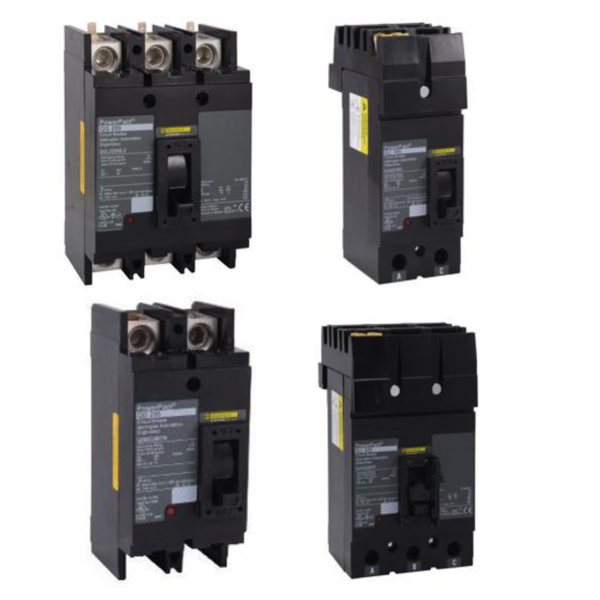Molded Case Circuit Breakers (Q Frame)

Square D by Schneider Electric’s PowerPact Multistandard circuit breakers are equipped with dual-break rotating contacts that reduce the amount of peak current during a short-circuit fault. They feature an over-center toggle mechanism providing quick-make, quick-break operation. Internal cross-bars provide common opening and closing of all poles with a single handle. The circuit breaker handle can assume any of three positions, ON, tripped or OFF. The center tripped position provides positive visual indication that the circuit breaker has tripped.
PowerPact Q-frame circuit breakers are designed to protect electrical systems from damage caused by short-circuits and overloads. They are equipped with thermal-magnetic trip units containing individual thermal (overload) and magnetic (short-circuit) sensing elements in each pole. PowerPact Q-frame circuit breakers are used for overcurrent protection and switching on AC systems. They are available in 2 and 3 pole designs and from 75 to 250 A. Unit-mount circuit breakers are available with mounting studs for bus-mounted applications or with lugs on both ends for cabled applications. These circuit breakers may be mounted in metering devices, individual enclosures, switchboards and panelboards. The I-line circuit breakers are specifically designed for use in I-line panelboards and switchboards.
What is a Circuit Breaker?
There are two different types of technologies that are commonly used in circuit breakers.
Magnetic Breakers
Magnetic Breakers are designed to react to short circuits or sharp spikes in voltage and current. The more current that passes through the breaker’s electromagnet, the stronger the magnet becomes. When the current exceeds the rating for that particular breaker, the magnetic force becomes strong enough that it will pull the contact back and disconnect it from the other contact, disconnecting power from the device.
Thermal Protection Breakers
Thermal Protection Breakers protect against a sustained overcurrent, or a higher current, for a longer period of time. Thermal protection uses a Bimetal strip that will bend the contacts away from each other to disconnect power. Thermal Magnetic Breakers are the most common type of circuit breakers. They combine magnetic technology to protect against short circuits or sharp spikes and thermal technology that protects against sustained overcurrent for a long period of time.

